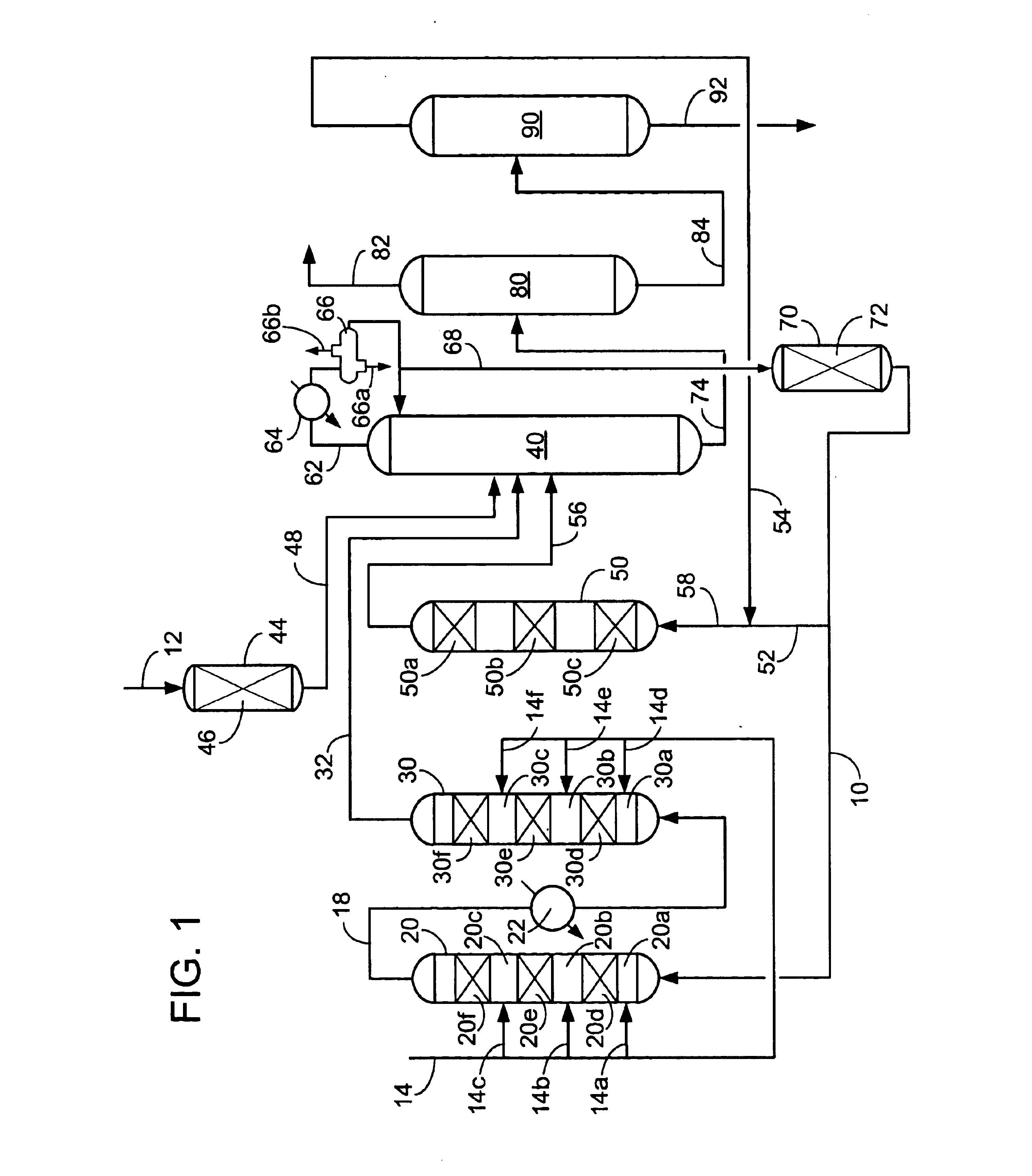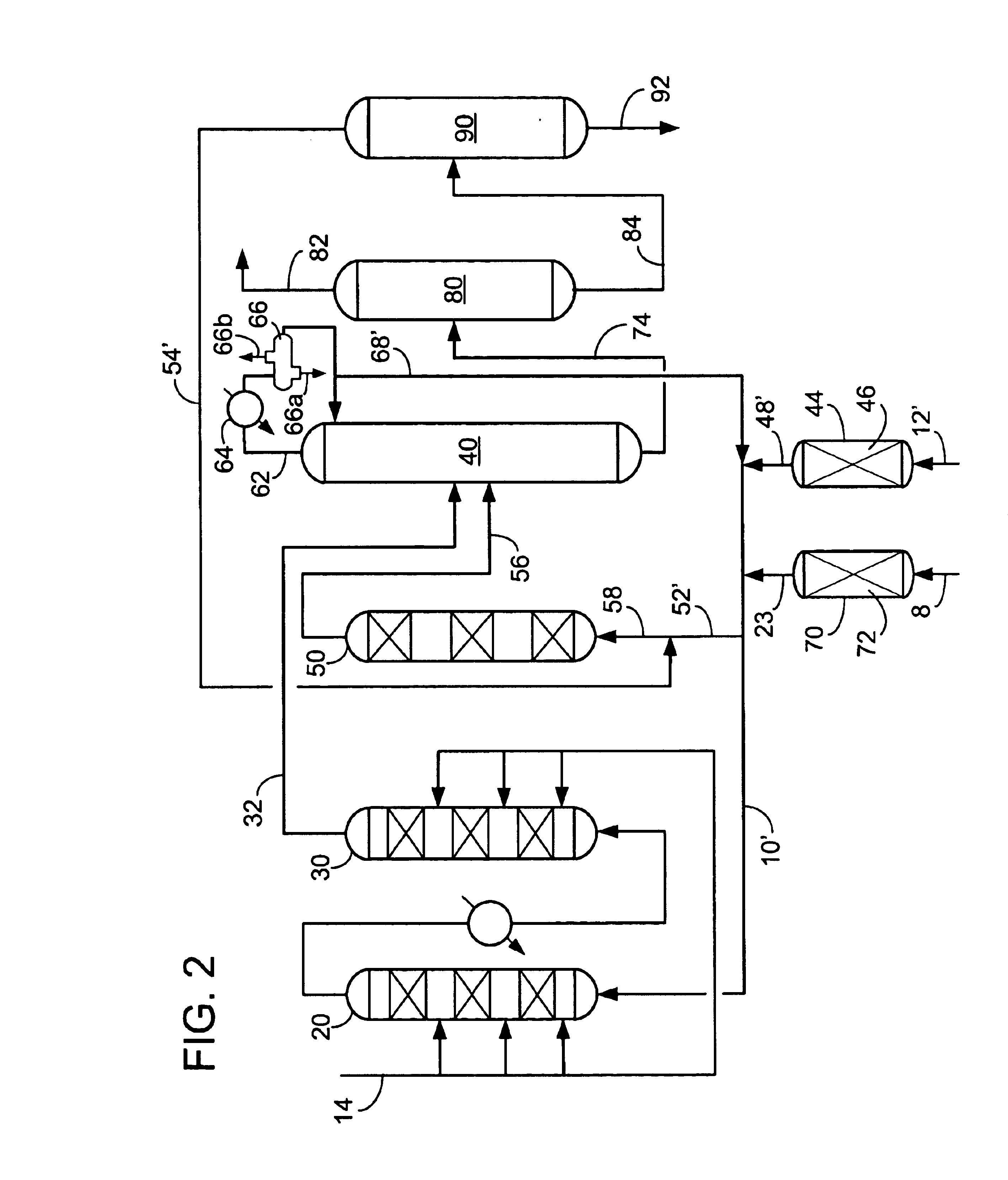Process and apparatus for the removal of nitrogen compounds from a fluid stream
a technology of nitrogen compounds and fluid streams, which is applied in the direction of chemistry apparatus and processes, organic chemistry, chemical production, etc., can solve the problems that conventional adsorbents such as clay and resin materials do not sufficiently adsorb nitrites from hydrocarbon streams, and achieve the effects of facilitating adsorption of nitrites, reducing the accumulation of coke, and improving the capacity of acidic molecular sieve adsorbents
- Summary
- Abstract
- Description
- Claims
- Application Information
AI Technical Summary
Benefits of technology
Problems solved by technology
Method used
Image
Examples
example i
[0067]A test was run to determine the effectiveness of an acidic molecular sieve in adsorbing acetonitrile from a benzene stream containing water at low temperatures. The adsorbent was prepared by extruding approximately 80 wt-% Y-zeolite with about 20 wt-% alumina binder. After drying the adsorbent was crushed and particles between 20 and 40 mesh were loaded into eight vessels fluidly communicated in series. Benzene feed saturated with water, which is about 500 wppm water, and loaded with 1 wppm acetonitrile was run through the eight adsorbent vessels in series at ambient temperature and pressure.
[0068]The ultimate loading in terms of adsorbed nitrogen relative to the adsorbent averaged over the eight adsorbent beds was 0.125 wt-%. The adsorbent in the first five beds had adsorbed its capacity, allowing acetonitrile through the bed, within one day and the adsorbent in beds six through eight adsorbed its capacity within two days.
[0069]Adsorbent from the beds was then rinsed with wat...
example ii
[0070]A series of test were conducted to compare the adsorption performance of clay, resin and molecular sieve adsorbents for acetonitrile, NMP and NFM. The adsorbents were loaded into eight vessels fluidly communicated in series. Toluene feed saturated with water, which is about 500 wppm water, and target loaded with 1 wppm each of acetonitrile, NFM and NMP was run through the eight adsorbent vessels in series at ambient temperature and pressure. A toluene feed for one experiment was without water. The Y zeolite was prepared by extruding approximately 80 wt-% Y-zeolite with about 20 wt-% alumina binder.
[0071]Table I compares the time it takes for organic nitrogen impurities to break through the selected adsorbent beds.
[0072]
TABLE IClayResinAdsorbent(SC-626GS)(A-15)Y ZeoliteY ZeoliteFeedWaterWaterWaterDrySaturatedSaturatedSaturatedACN breakthrough inimmediate0.9immediate0.1initial bed (days)ACN breakthrough in1.60.80.15.0eighth bed (days)NMP breakthrough in6.9immediate0.10.1initial ...
example iii
[0073]A series of tests were conducted to evaluate the removal of acetonitrile (ACN) from benzene by contacting it with an adsorbent prepared by extruding approximately 80 wt-% Y-zeolite with about 20 wt-% alumina binder. The adsorbent had an ABD of 0.625 g / cc. For all tests, the adsorbent was dried at 120° C. for 2 hours prior to loading 25 grams of the adsorbent into a vessel. The tests were run at 24° C. and 150° C. operating temperatures and with varying amounts of water in the feed benzene.
[0074]Feedstock for the tests was prepared by spiking the benzene stream with ACN to give a target of approximately 20 wppm nitrogen. The starting benzene feed was dried before it was spiked with the ACN. In two of the tests, the benzene feed was spiked with water to determine the effect of water on the nitrogen adsorption. Results of spent adsorbent analysis for four tests are summarized in Table II.
[0075]
TABLE IITemperatureNominal WaterSpent Adsorbent AverageTest No.(° C.)Content (wppm)Nitr...
PUM
| Property | Measurement | Unit |
|---|---|---|
| temperature | aaaaa | aaaaa |
| temperature | aaaaa | aaaaa |
| temperature | aaaaa | aaaaa |
Abstract
Description
Claims
Application Information
 Login to View More
Login to View More - R&D
- Intellectual Property
- Life Sciences
- Materials
- Tech Scout
- Unparalleled Data Quality
- Higher Quality Content
- 60% Fewer Hallucinations
Browse by: Latest US Patents, China's latest patents, Technical Efficacy Thesaurus, Application Domain, Technology Topic, Popular Technical Reports.
© 2025 PatSnap. All rights reserved.Legal|Privacy policy|Modern Slavery Act Transparency Statement|Sitemap|About US| Contact US: help@patsnap.com



